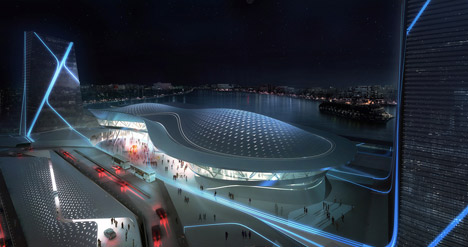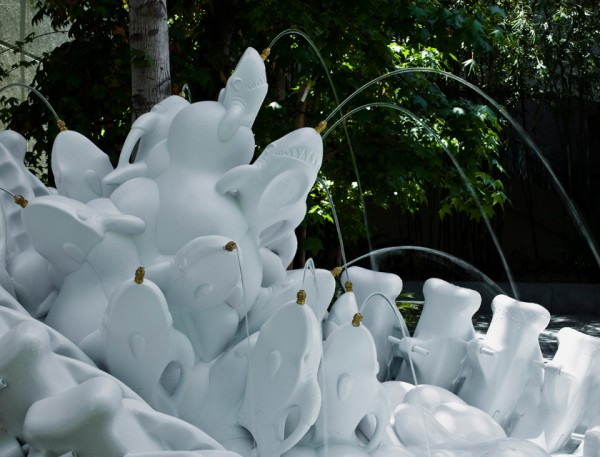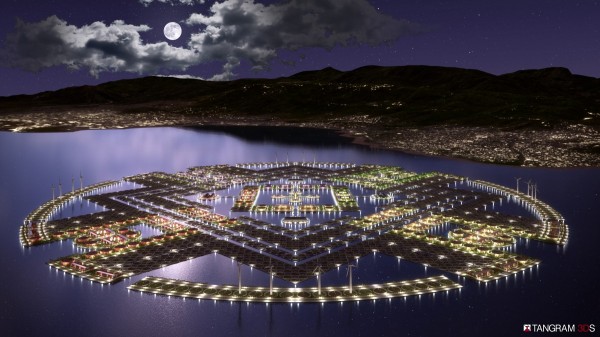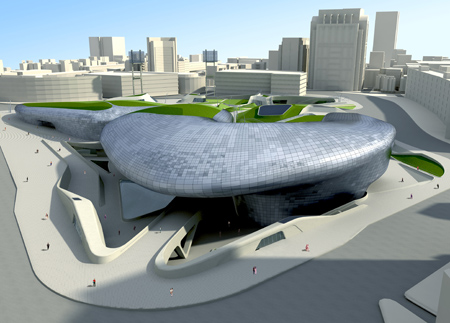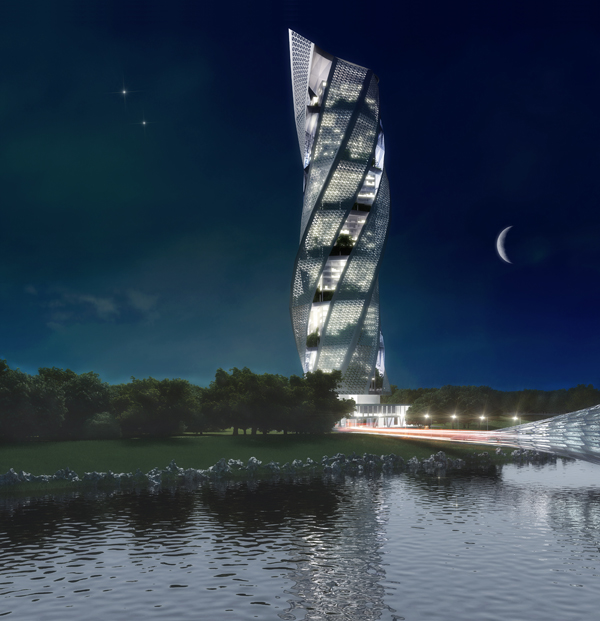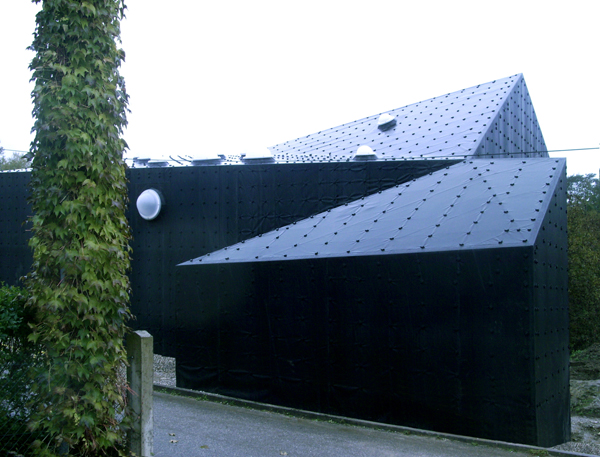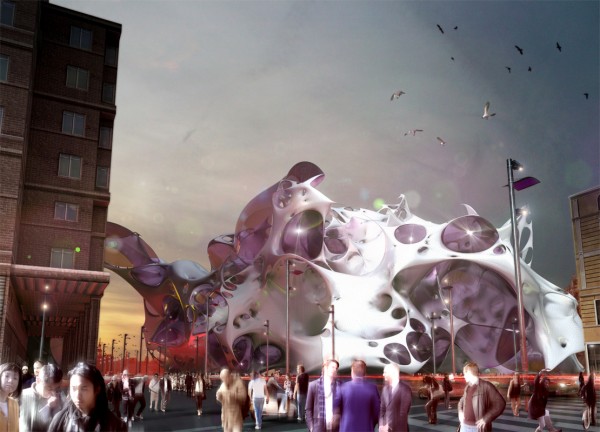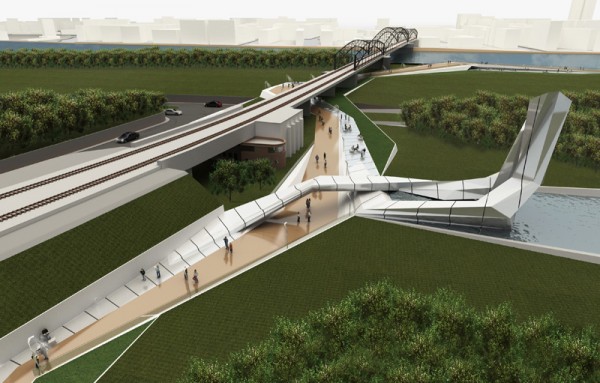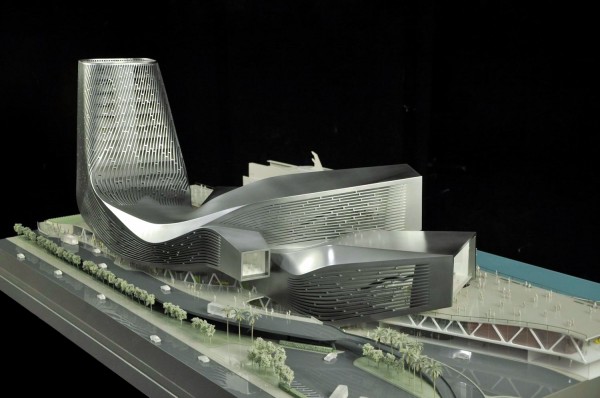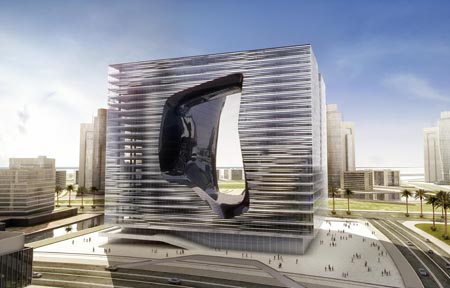The new Kaohsiung Marine Gateway Terminal designed by Asymptote is a new state of the art transportation interchange, an urban destination with both terminal and public facilities including exhibition and event spaces for the people of Kaohsiung as well as for national and international visitors. The project transforms the site from its industrial roots into a dynamic urban hub and a global gateway that bring a powerful and electric experience to the city 24 hours a day. The port terminal as envisioned by Asymptote is designed to invigorate and activate Kaohsiung’s city edge at the water. The port terminal extends the urban realm from the center of Kaohsiung to the city’s waterfront and connects this new urban space with the vitality of the future Pop Music Center and other public recreational and commercial activities that are to be located along the planned park at water’s edge.
Key components of Asymptote’s design are two elegant towers, a sculptural terminal hall that is framed and hovers in an elevated position between them, and a plinth below that connects the towers and accommodates a new public urban space. This open plaza is an articulated yet continuous public space that is located at the very intersection of circulation paths that seamlessly draw the urban space of Kaohsiung into the heart of the project through to the water’s edge and back towards the city. These provide access to a number of important public spaces and programs as well as contribute to the dramatic entry sequence to the port facilities. This intertwining of public and private access as well as programming creates an activated public realm, providing a unique experience to ship passengers and city dwellers alike. The curved form of the terminal hall sits delicately yet majestically above the large open plaza activated by the flow of people moving back and forth between the harbor and the city. From the city, the terminal forms an urban scaled aperture that frames the harbor and water beyond. The sculpted underside of the floating building provides shelter to the urban space from the strong sun and seasonal rains while at night it provides dramatic illumination for the ongoing public activities, events and celebrations. Read the rest of this entry »

